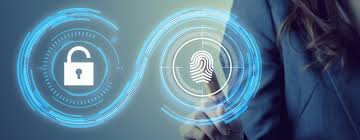Introduction
In the digital age, personal data has become a valuable commodity. From online shopping and social media to financial transactions and healthcare records, our lives are intertwined with technology, making it crucial to prioritize personal data security. With cyber threats on the rise, individuals must adopt proactive measures to safeguard their sensitive information from unauthorized access, data breaches, and identity theft. This article will delve into various strategies and best practices that can help you keep your personal data secure in an interconnected world.
Strong and Unique Passwords
One of the fundamental steps in personal data security is creating strong and unique passwords for all your accounts. Avoid using easily guessable passwords such as “123456” or “password.” Instead, craft complex passwords with a mix of uppercase and lowercase letters, numbers, and special characters. Furthermore, use different passwords for each account to prevent a security breach in one account from affecting others.
Two-Factor Authentication (2FA)
Two-factor authentication (2FA) adds an extra layer of security by requiring a second form of verification beyond a password. This often involves receiving a code on your mobile device or email that you need to enter in addition to your password. Implementing 2FA significantly reduces the risk of unauthorized access even if your password is compromised.
Keep Software Updated
Regularly updating your operating system, applications, and software is crucial for data security. Developers release updates to fix vulnerabilities that hackers can exploit. By keeping your software up to date, you ensure that you have the latest security patches installed, minimizing the chances of a cyberattack.
Be Cautious with Emails
Phishing attacks are a common method cybercriminals use to gain access to personal data. Be cautious when opening emails from unknown senders or unexpected attachments or links. Never provide personal information or login credentials through email. If an email seems suspicious, verify its legitimacy by directly contacting the sender through official channels.
Secure Wi-Fi Networks
Public Wi-Fi networks are convenient but often unsecured, making them potential hotspots for cyberattacks. Avoid accessing sensitive accounts or conducting financial transactions while connected to public Wi-Fi. When using Wi-Fi at home, ensure it is password protected and uses encryption methods like WPA3 for enhanced security.
Use Secure Websites
Always ensure you’re using secure websites for online transactions. Look for “https://” at the beginning of the URL and a padlock icon in the address bar. Secure websites encrypt the data transmitted between your browser and the server, making it significantly harder for attackers to intercept sensitive information.
Regular Data Backups
Data loss can occur due to hardware failure, malware, or other unforeseen circumstances. Regularly backing up your important data to an external drive or a secure cloud storage service can help you recover your information in case of a data breach or device failure.
Privacy Settings on Social Media
Review and adjust the privacy settings on your social media accounts. Limit the amount of personal information visible to the public. Cybercriminals often gather information from social media platforms to carry out targeted attacks, so being mindful of what you share can help protect your data.
Avoid Clicking on Suspicious Links
Cybercriminals often use deceptive links to lead you to malicious websites. Hover over links before clicking on them to see the actual URL. Be cautious when clicking on links in emails, messages, or social media posts, especially if they promise sensational content or require urgent action.
Use Encrypted Messaging Apps
For sensitive conversations, consider using encrypted messaging apps that offer end-to-end encryption. This ensures that only you and the recipient can read the messages, adding an extra layer of confidentiality.
Secure Your Devices
Protect your devices with strong passwords or biometric authentication methods, such as fingerprint or facial recognition. In case your device gets lost or stolen, unauthorized access to your data will be more difficult.
Regularly Monitor Your Financial Statements
Frequently review your bank and credit card statements for any unauthorized transactions. Early detection of suspicious activities can help you take immediate action to prevent further financial damage.
Conclusion
In an increasingly digital world, personal data security is a top priority. By following these best practices and strategies, you can significantly reduce the risk of falling victim to cyberattacks, data breaches, and identity theft. From using strong passwords and two-factor authentication to staying cautious with emails and securing your devices, each step contributes to creating a safer digital environment for yourself. Remember, being proactive about personal data security not only safeguards your sensitive information but also provides peace of mind in the interconnected landscape of the 21st century.















